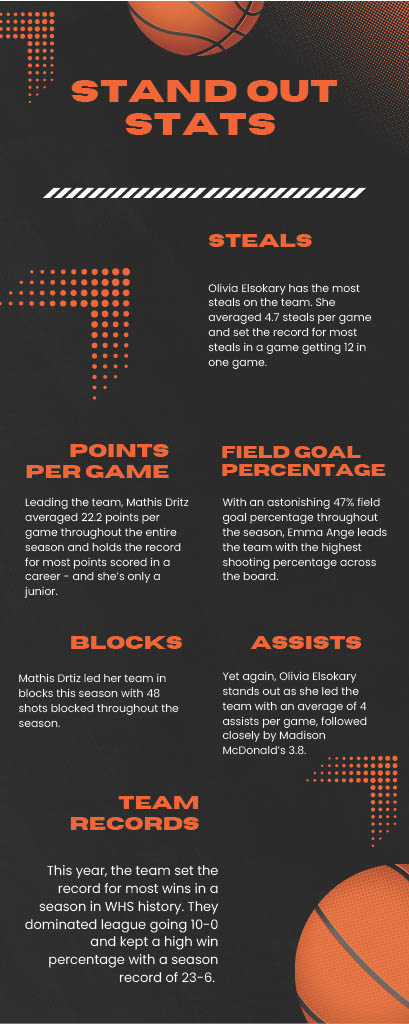Upon its release last year, “Stranger Things” immediately became a Netflix hit.
In honor of the newly released second season on Oct. 27, it’s only fitting to reminisce where the famous show got its roots.
Season one follows the supernatural disappearance of young Will Byers (Noah Schnapp) and the struggle that members of the small town of Hawkins, Indiana must overcome to reunite Will with his family and friends. Throughout the investigation, many additional factors thicken the plot, such as the government’s secretive role in the matter, the appearance of a mysterious girl named Eleven (Millie Bobby Brown) and a paranormal creature everyone should be afraid of: the Demogorgon.
The show also contains profound elements of love and sacrifice, drawing upon connections that many high schoolers can make.
With its ninety–six percent rating on Rotten Tomatoes and about 14 million viewers ages 18–49 within the first 35 days of streaming, season one of “Stranger Things” became the third most viewed Netflix series of 2016, according to Symphony Advanced Media.
The eight episode series grasps viewers of all ages, and although the survey highlights ages 18–49, many fans come from WHS.
“Stranger Things” is reminiscent of the 1980s, attracting a wide audience with its blend of the past and current pop culture. It makes references to the iconic bike ride in E.T. the Extra Terrestrial and unexplainable deaths of A Nightmare on Elm Street, two 1980s classics.
“The 80s atmosphere inspired me to watch it more because I think that era is very interesting,” said Hadley Barber ‘20. “Everything was in tune with the 80s, and this made it unique.”
The 1980s setting not only appeals to students, but also reaches out to parents and adults alike. While students can admire how the era is seamlessly integrated into pop culture, adults can relate to the time period of “Stranger Things” because they lived through it as teenagers.
“It was really cool because my mom got all of the 80s references, and I liked seeing how it connected to her as well,” said Joey Cacciarelli ‘21.
Other than the overall atmosphere, music plays a prominent role in the series. From the recurring 1980s song “Should I Stay or Should I Go” by The Clash to the show’s eerie theme song, “Stranger Things” incorporates the music styles of the past into the present.
“I loved the 1980s setting, and the synthesizers that were used for the theme music,” said Jake Kaplinski ‘18. “I liked the sci–fi twist that it had to it.”
“Stranger Things” competes with other paranormal TV shows and movies on Netflix in that it doesn’t follow the horror cliché of blood and graphic imagery.
“’Stranger Things’ is definitely more developed [than other shows] and didn’t have just blood, guts, death and jumpscares,” said Milena Radovich ‘19. “It was done much more tastefully, and there were moments of subtle scare and suspense.”
But more prominent than anything else, “Stranger Things” interests many of its viewers with its strong, unique cast of characters.
“Eleven appealed to me because she isn’t just a typical girl,” said Kaplinski. “I liked the fact that [the writers] don’t have her speak too much, but she shows a lot of emotion with her facial expressions.”
Eleven is not the only character that appears to be a “misfit.” In fact, all four of the middle schoolers, Mike Wheeler (Finn Wolfhard), Dustin Henderson (Gaten Matarazzo), Lucas Sinclair (Caleb McLaughlin) and Will Byers, fit into the geeky, outsider archetype and defy the popular high school kid stereotype.
All of the female characters are portrayed as strong, as demonstrated by Joyce Byers (Winona Ryder), Nancy Wheeler (Natalia Dyer) and Barbara “Barb” Holland (Shannon Purser).
American actress Winona Ryder plays Joyce Byers, the passionate mother of Will Byers, embodying her character’s nearly crazed obsession to find Will. With her frustration and undying determination, Byers demonstrates a mother’s neverending love for her children.
“Joyce played a very strong role in the show, mainly because of her fierceness,” said Barber. “Even when nobody believed her, she persisted in searching for her son and went great measures to reunite with him.”
Barb, Nancy’s best friend from season one, plays a vital role. Even when Nancy makes poor decisions and is disloyal, Barb remains sensible and true to herself.
“I felt like Barb was a major reason I watched the show,” said Alex Ward ‘21. “Every time Nancy did something stupid, Barb was basically saying what everyone yells at the TV.”
Season one left an impact on its viewers and set up the foundation for the season two hype and excitement. The second season differs from season one in many ways, especially with the introduction of new characters and a more intensified plot.
A new member of the “core four” was added: Maxine “MadMax” (Sadie Sink), who moves from California and has difficulty being accepted by Mike but is ultimately a good match for the group’s “outsider” archetype. Her brother seems cruel and careless but struggled with a rough past.
“I like how MadMax fits so well with the group,” said Ward. “She is tough, so I’m excited to see how she can handle the danger of the Upside Down.”
Joyce Byers also develops a love interest, Bob Newby (Sean Astin), who plays a fatherly role in the Byers family, especially for Will.
Many unpredictable relationships and personality changes appear in the season as well.
While there is a multitude of unexpected surprises and shockers in season two, only so much can be said without spoiling the firsthand enjoyment of watching it on a comfy couch, warm blanket and snacks in hand.
“It had every aspect that was amazing about the first season, but it was expanded and built upon,” said Radovich. “It created new conflict and plot lines that absolutely shocked me.”

























